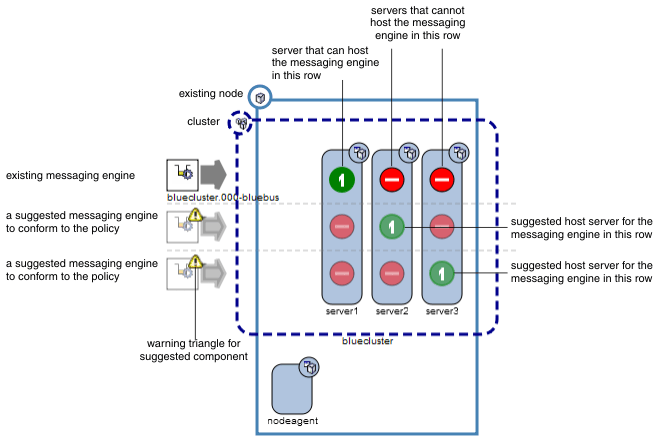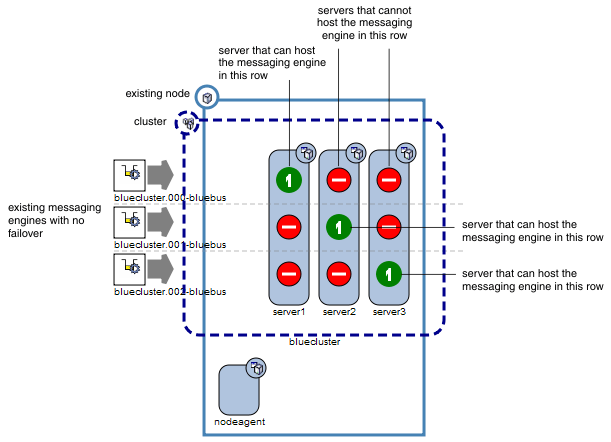Scalability messaging engine policy
The scalability messaging engine policy is a predefined messaging engine policy type provided when you use messaging engine policy assistance. It helps you to create and configure messaging engines in a cluster that is a member of a bus when we require a configuration that is easy to expand for performance or workload sharing.
The scalability policy ensures that there is a messaging engine for each server in a cluster. If we add more servers to the cluster to support a larger client load or higher messaging throughput, each new server will run a messaging engine. Use the scalability policy for a system where to add more servers to a cluster to achieve better performance. If we also require high availability, see Scalability with high availability messaging engine policy.
The scalability messaging engine policy creates a single messaging engine for each server in the cluster. Each messaging engine can run only on the server that it is assigned to, and it cannot fail over to another server. If a server fails, the messaging engine running on it also fails, and is not available until the server recovers.
Each messaging engine is assigned to a specific server by configuring it to run only on servers in its list of preferred servers, then specifying only one server in that preferred servers list.
When you select the scalability messaging engine policy type on the console, a diagram shows the selected cluster and the eventual outcome of the policy.
If there are no warning triangles in the diagram, and the "Is further configuration required" column shows No in the Scalability row, the topology of the cluster and the configuration of the messaging engine is suitable, and we can continue.
If there are warning triangles in the diagram, examine the messages in the Scalability row for guidance on how to achieve a suitable messaging engine configuration.
For example, the following figure shows three servers configured on one node and one messaging engine that can run on server1. A green circle on the server shows the location where the messaging engine can run. Two additional messaging engines are suggested by the grayed out components and the yellow warning triangles. There must be two more messaging engines to conform to the selected messaging engine policy.
Figure 1. Scalability policy selected without a suitable messaging engine configuration

The following figure is an example of a diagram displayed when the messaging engine configuration is suitable for the scalability policy. There are three messaging engines and each one can run on only one server. There are no warning triangles and no faded out components because the policy can be used successfully.
Figure 2. Scalability policy selected with a suitable messaging engine configuration

The following table shows the messaging engine policy settings for a cluster of three servers that use the scalability messaging engine policy.
| Messaging engine name | Failover | Failback | Preferred servers list | Only run on preferred servers |
|---|---|---|---|---|
| clustername.000-busname | false | false | server1 | true |
| clustername.001-busname | false | false | server2 | true |
| clustername.002-busname | false | false | server3 | true |
For more information about messaging engine configuration for scalability or workload sharing, see the related information.
Related concepts
Related tasks
Related information: